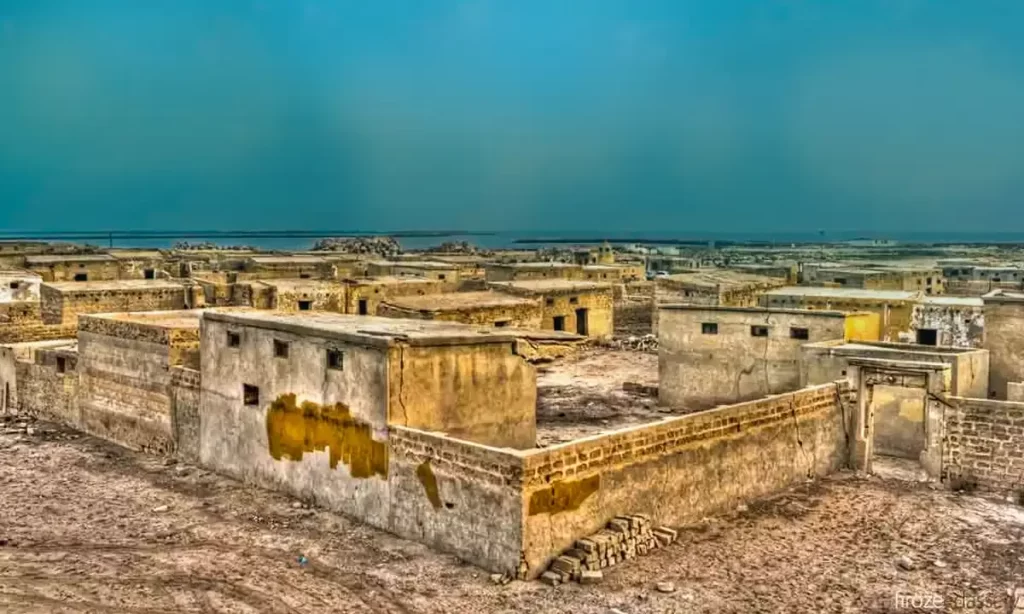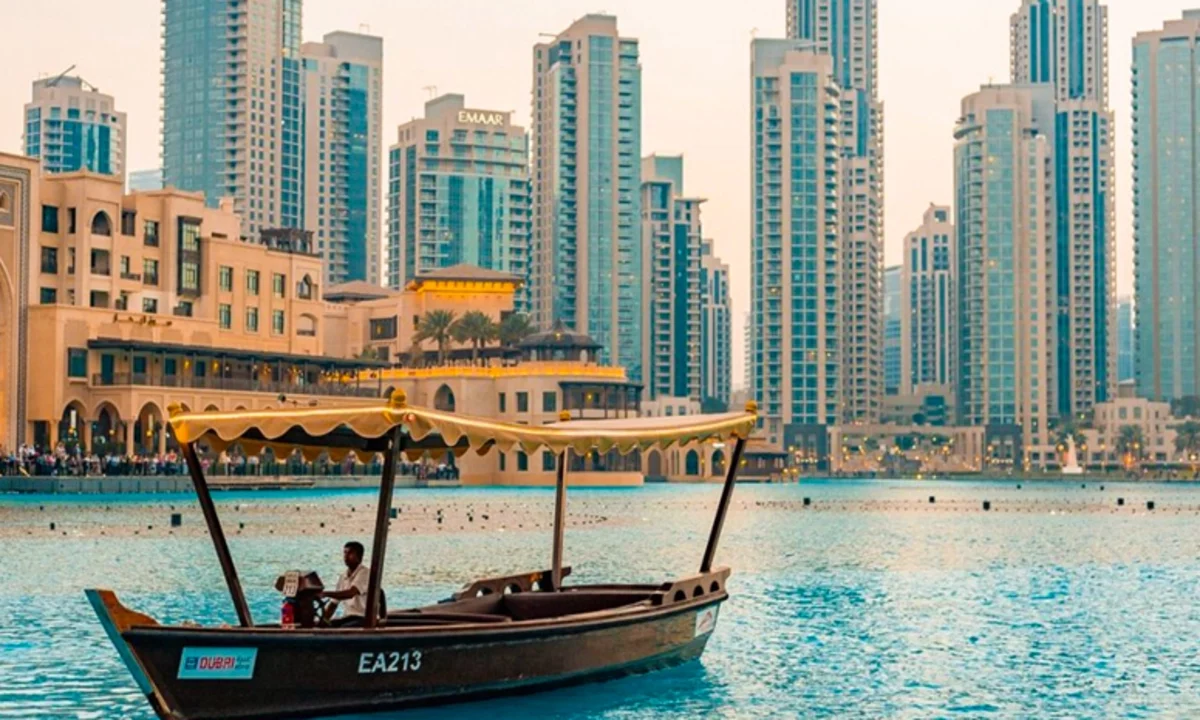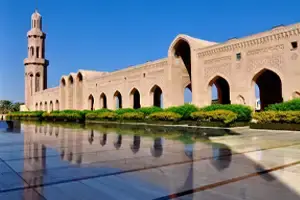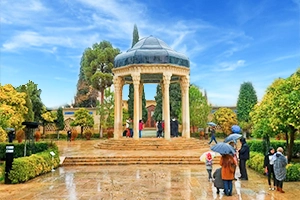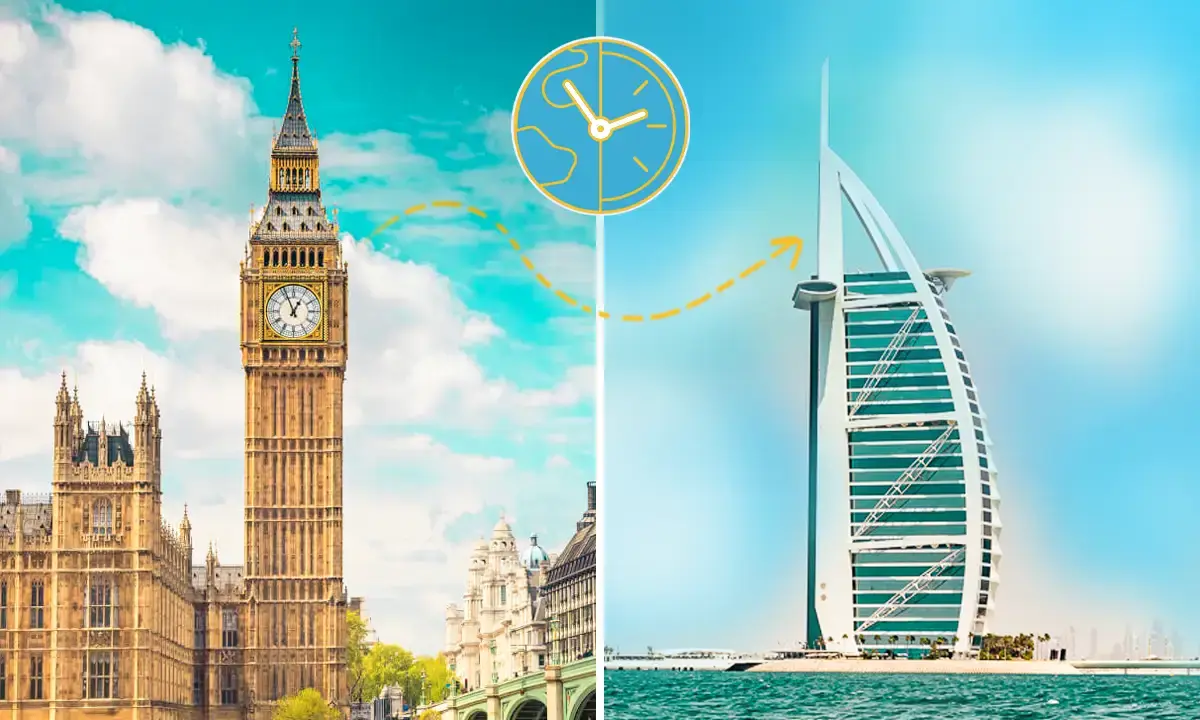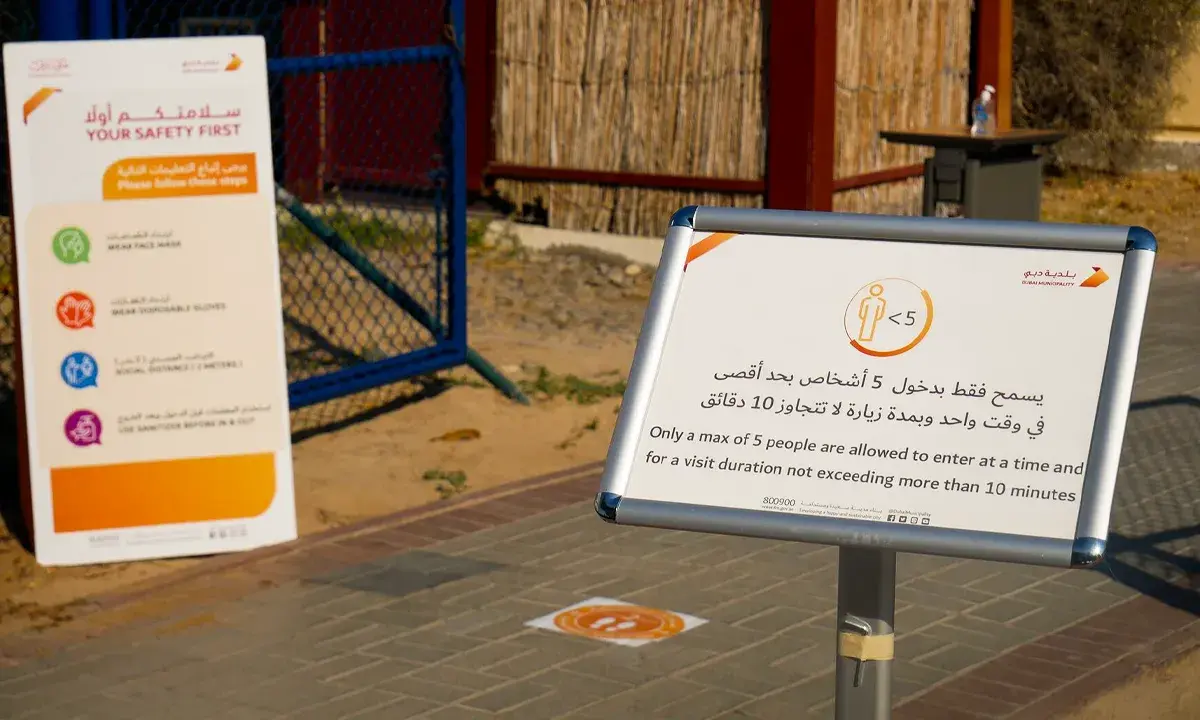Dubai is a city of luxury, glamour, and excitement. But it’s also a city with a dark side. Many haunted places in Dubai are said to be inhabited by ghosts and other supernatural beings. Here are the top 5 haunted places in Dubai that you shouldn’t visit:
- Jumeirah’s Haunted House
- Al Khail Gate Apartment
- The Haunted Village in Hatta
- Jazirat Al Hamra
- Al Qasimi Palace
- The Tunnel in Pan Emirates
Table of Contents
Jumeirah’s Haunted House
The Jumeirah Haunted House in Dubai is a location shrouded in urban legends and eerie stories. Here’s a detailed look at what you should know about this infamous place:
Location and Description
- Where It Is: The haunted house is located in the Jumeirah district, a residential area known for its luxurious properties and upscale lifestyle in Dubai.
- Appearance: It stands out due to its neglected state, which is in stark contrast to the well-maintained neighboring properties. The house is often described as dilapidated, with an aura of neglect and desolation.
The Legend
- Background: The house is said to have been abandoned for many years. The story goes that a wealthy family once lived there but left suddenly under mysterious circumstances.
- Paranormal Claims: There are numerous tales of supernatural occurrences. These include sightings of apparitions, unexplained noises, and eerie feelings experienced by those who pass by or, dare to enter.
- Local Perception: The house has gained a reputation among locals and expatriates alike as a place of haunting. It’s a topic of hushed conversations and speculative folklore.
Experiences
- Visitor Accounts: Some curious visitors have reported feeling watched or an inexplicable sense of dread upon approaching or entering the house.
- Skepticism and Belief: While some people firmly believe in the paranormal activities associated with the house, others remain skeptical, attributing the stories to urban legends and a lack of upkeep.
Accessibility
- Public Access: The house is located in a public area, but it’s important to note that it’s private property. Trespassing on the property is illegal and disrespectful.
- Safety Concerns: The dilapidated state of the building poses safety risks. It’s advisable for those curious about the house to view it from a safe distance.
Cultural Impact
- In Media: The haunted house in Jumeirah has been the subject of various articles and blog posts, often featured in lists of haunted places in Dubai.
- Halloween Interest: It often gains particular attention around Halloween, with heightened interest from thrill-seekers and ghost story enthusiasts.
Important Considerations
- Respect for Privacy and Laws: Visitors should respect local laws, private property, and local culture. Causing a nuisance or violating privacy rights can lead to legal issues.
- Rational Approach: It’s essential to approach such places with a rational mindset. Many haunted stories are based more on folklore and less on factual evidence.
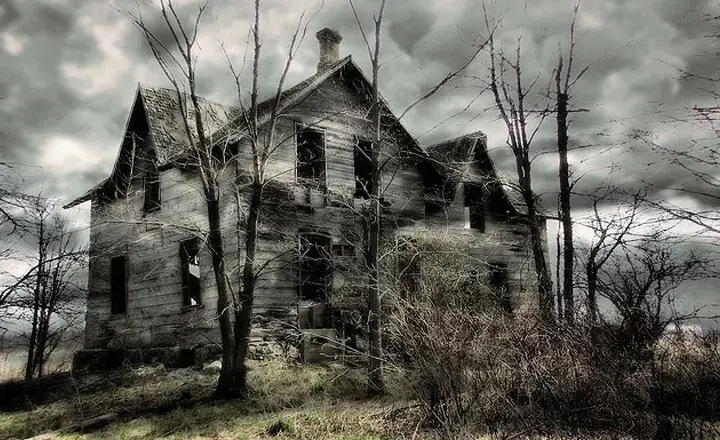
Al Khail Gate Apartment
Al Khail Gate Apartment in Dubai had garnered attention, not just for its residential appeal but also due to rumors and stories suggesting it’s haunted. Here’s a detailed look at what is known about Al Khail Gate Apartment:
Overview of Al Khail Gate Apartment
- Location: Al Khail Gate is a large residential community located in the Al Quoz industrial area of Dubai.
- Composition: It consists of multiple apartment buildings, offering affordable housing options primarily to the middle-income group. The community is known for its convenient location and comprehensive amenities.
The Haunted Reputation
- Origin of Stories: The rumors about Al Khail Gate being haunted began circulating among residents and through word of mouth in Dubai.
- Nature of Paranormal Claims: Residents and visitors have reported a range of eerie experiences, including:
- Unexplained noises and voices.
- Shadows and apparitions.
- Electronic disturbances, like appliances turning on and off.
- A general feeling of unease or being watched
Residents’ Experiences
- Response to Paranormal Activity: Some residents have reported feeling uncomfortable and disturbed by these unexplained occurrences, leading to a sense of fear within certain parts of the community.
- Skepticism and Rational Explanations: While some residents believe in these paranormal claims, others remain skeptical, attributing the experiences to more mundane causes like the wind, reflections, or electrical issues.
Impact on the Community
- Media Attention: The haunted reputation of Al Khail Gate Apartment has caught the attention of local media and bloggers, often being featured in discussions about haunted places in Dubai.
- Cultural and Social Impact: In a city known for its modernity and luxury, the stories surrounding Al Khail Gate add a layer of mystery and intrigue to Dubai’s urban landscape.
Accessibility and Safety
- Public Access: Al Khail Gate is a residential area, and respect for the residents’ privacy is paramount. Any exploration or visitation should be conducted responsibly and lawfully.
- Safety Considerations: It’s important for those curious about the community’s haunted reputation to prioritize safety and adhere to local laws and cultural norms. This person can rent a car in Dubai and easily visit this place.
The Haunted Village in Hatta
The Haunted Village in Hatta remains an enigmatic part of the UAE’s folklore tapestry. For those interested in the paranormal or cultural stories, it represents a curious and intriguing aspect of the region’s rich heritage. However, it’s essential to approach such places with respect for local customs and an understanding of the cultural context in which these legends have arisen.
Location and Background
Where It Is: Hatta is a town in the Dubai Emirate, situated in the Hajar Mountains. It’s known for its natural beauty, heritage village, and outdoor activities.
The Haunted Village: Not to be confused with the popular Hatta Heritage Village, the Haunted Village is a separate, lesser-known location. It’s said to be an old, abandoned village, located away from the main tourist areas.
Legends and Stories
Origins of the Haunting Tales: Stories about the Haunted Village in Hatta have been part of local oral tradition. The tales often involve jinns, supernatural beings in Islamic mythology, believed to inhabit abandoned places.
Nature of the Hauntings: The legends typically include sightings of ghostly figures, unexplained noises, or feelings of being watched. There are also stories of people feeling an oppressive sense of dread upon entering or near the village.
Visitor Experiences
Reports from Visitors: Those who claim to have visited the village often speak of a heavy, eerie atmosphere, with some saying they’ve experienced strange occurrences that they couldn’t logically explain.
Skepticism: As with many such places, there’s a fair amount of skepticism. Some people believe the eerie feelings could be attributed to the village’s deserted state and isolation.
Cultural Context
Local Beliefs: In Emirati culture, as in many parts of the Middle East, abandoned places are often thought to be inhabited by jinns. Such locations, especially old villages, are treated with a degree of caution and respect.
Impact on Local Tourism: The Haunted Village is not a promoted tourist spot like the Hatta Heritage Village. It’s more a part of local lore than a destination for visitors.
Accessibility
Visiting the Village: Information about accessing the Haunted Village is sparse, as it’s not an official tourist site. Caution and respect for local beliefs and properties are advised.
Safety and Legal Concerns: If planning to visit, it’s crucial to consider safety and legality. The village’s structures might be unstable, and as it’s not a designated tourist area, visitors should ensure they’re not trespassing on private property.

Jazirat Al Hamra
Jazirat Al Hamra offers a unique window into the UAE’s past, standing in contrast to the modern developments of the region. It serves as a reminder of the country’s rich history and cultural heritage. For those visiting, it provides an atmospheric and thought-provoking experience, although the tales of hauntings should be approached with a degree of skepticism and respect for local traditions and beliefs.
Historical Background
- Origins: Jazirat Al Hamra, meaning “Red Island” in Arabic, was originally a coastal village inhabited by a tribe known as the Za’ab.
- Pearl Fishing Community: The town was once a thriving pearl fishing village, dating back to the 16th century, making it one of the oldest coastal villages in the UAE.
- Abandonment: The village was abandoned around the 1960s when the inhabitants moved to other areas due to changes in the economy and lifestyle. This was partly influenced by the collapse of the pearl industry and the discovery of oil.
Architectural Significance
- Traditional Architecture: The town is notable for its traditional coral-block architecture, which is characteristic of the region. The houses, mosques, and fortifications were made using coral stones, seashells, and mud.
- Preservation Status: Although in a state of decay, many of the buildings still stand, providing a glimpse into the life of the inhabitants who once lived there.
Haunted Reputation
- Paranormal Claims: Jazirat Al Hamra is famous for being one of the most haunted sites in the UAE. There are tales of mysterious noises, ghost sightings, and unexplained phenomena.
- Cultural Beliefs: The local folklore often attributes these occurrences to the jinns or supernatural beings that are said to inhabit abandoned places.
Visitor Experiences
- Tourism and Exploration: The village has become a point of interest for visitors, photographers, and paranormal enthusiasts. Its eerie, desolate appearance adds to its allure.
- Accessibility: Jazirat Al Hamra can be visited, but tourists need to be respectful of the site’s cultural significance and not disturb the remnants of the village.
Cultural and Educational Interest
- Study and Research: The town is of interest to historians, cultural researchers, and students studying the architectural and societal evolution in the UAE.
- Conservation Efforts: There have been discussions about preserving the site due to its historical and cultural importance.
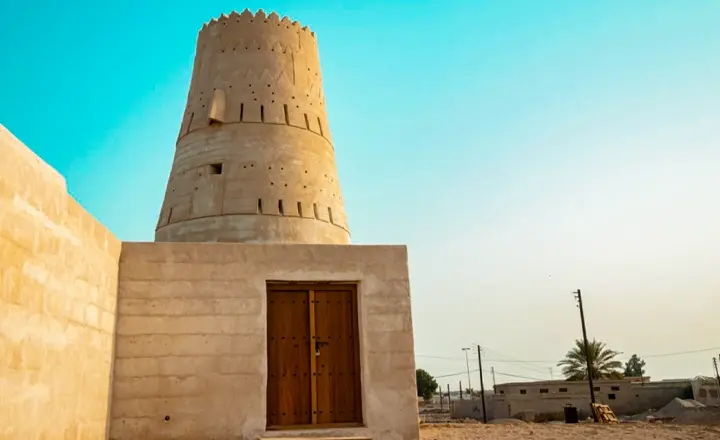
Al Qasimi Palace
Al Qasimi Palace in Ras Al Khaimah stands as a mysterious and hauntingly beautiful relic. It embodies a blend of rich history, architectural grandeur, and intriguing folklore. While it attracts those interested in the paranormal, it’s also a symbol of the cultural depth and historical layers that characterize the UAE. Visitors are encouraged to respect the site’s cultural significance and to prioritize safety when exploring.
Background and History
- Location: Al Qasimi Palace is located in Ras Al Khaimah, one of the seven emirates in the UAE.
- Construction: The palace was built over 25 years ago by the Al Qasimi family, one of the six ruling families of the UAE.
- Design: It stands out for its grandiose architecture and intricate design, featuring lavish decorations, large windows, and extensive craftsmanship.
The Haunted Reputation
- Abandonment: Despite its opulence, the palace was reportedly abandoned just one year after its completion.
- Paranormal Rumors: There are stories of furniture moving on its own, shadows in the windows, unexplained noises, and chilling sensations reported by those who have ventured near it. These tales have contributed to its reputation as a haunted palace.
- Local Lore: The rumors are often linked to local folklore involving jinns or supernatural entities believed to inhabit certain places, especially those that are deserted.
Visitor Experiences
- Tourist Attraction: Al Qasimi Palace has become a point of interest for visitors, ghost hunters, and those fascinated by the paranormal.
- Exploration: Those who visit often describe an eerie atmosphere, with the abandoned and decayed state of the palace adding to the spooky experience.
Accessibility
- Location Accessibility: The palace is relatively accessible to the public. However, visitors should approach with caution and respect for the property.
- Safety Concerns: Given its state of disrepair, visitors should be mindful of potential safety hazards.
Cultural Context
- Significance: Beyond the ghost stories, the palace is a significant part of the cultural and architectural heritage of Ras Al Khaimah.
- Conservation Considerations: Discussions about conserving and restoring the palace have occurred, emphasizing its historical value.
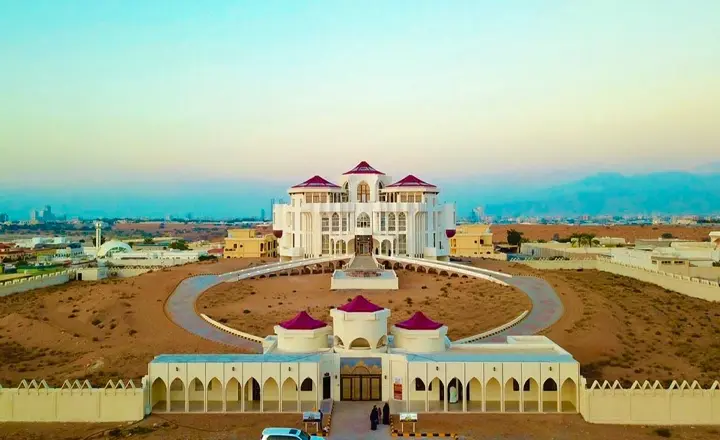
The Tunnel in Pan Emirates
he Tunnel in Pan Emirates” does not appear to be a widely recognized or documented location, especially in the context of being a haunted or notable site in the United Arab Emirates (UAE). The UAE, particularly Dubai and its surrounding regions, is known for several well-known tunnels and infrastructural projects, but none specifically by the name “The Tunnel in Pan Emirates” is recognized as a point of interest or a haunted site. This tunnel has been out of the site of occupied places for some time.
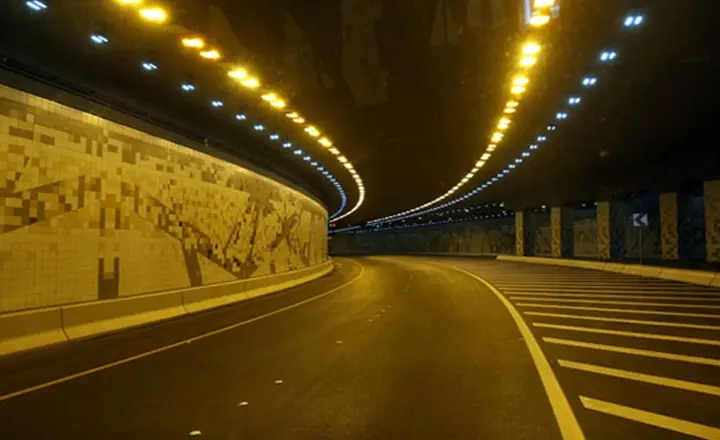
Last word
In conclusion, Dubai, a city renowned for its modern architecture and luxurious lifestyle, also harbors a darker, more mysterious side. The top 6 haunted places in Dubai, ranging from abandoned villages to desolate beaches and eerie urban locations, offer a chilling glimpse into the city’s lesser-known and potentially paranormal aspects. While these sites, steeped in tales of unexplained occurrences and ghostly sightings, hold a certain allure for the adventurous and the curious, they are generally advised against visiting. The combination of their unsettling histories, potential safety risks, and respect for local customs and beliefs makes these haunted locales more suited for distant intrigue rather than actual exploration. This stark contrast between Dubai’s glittering urban landscape and its haunted, forsaken spots further adds to the city’s multifaceted character.
The most notorious haunted places in Dubai include the Jazirat Al Hamra, known as the Ghost Town; the Al Khail Gate; the abandoned village in Al Madam; the Dubai Marina, specifically some of its high-rise apartments; the Al Qasimi Palace in Ras Al Khaimah; and certain desolate areas of the Jebel Ali’s labor camps. Each of these locations is shrouded in eerie tales and unexplained phenomena.
It’s advised against visiting these haunted places in Dubai due to a combination of factors including safety concerns, respect for local customs and private property, and the unsettling nature of these sites. Many of these locations are abandoned or not well-maintained, posing physical risks. Additionally, local beliefs and cultural sensitivities around these places should be respected.
Yes, some haunted places in Dubai have legal restrictions. Places like Jazirat Al Hamra and Al Qasimi Palace are private properties or protected areas, and trespassing can lead to legal consequences. It’s important to respect these restrictions and understand that accessing these sites without permission is not only disrespectful but also illegal.
Reported paranormal activities in these places include unexplained noises, ghost sightings, eerie feelings of being watched or followed, and sudden drops in temperature. In some locations, like the abandoned village in Al Madam, visitors have reported seeing shadows or hearing whispers, while in Jazirat Al Hamra, there are tales of strange apparitions and sounds echoing through the empty streets. However, these accounts are largely based on urban legends and personal anecdotes.
